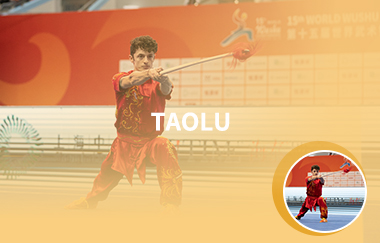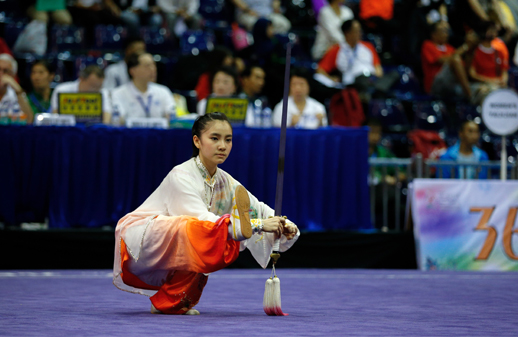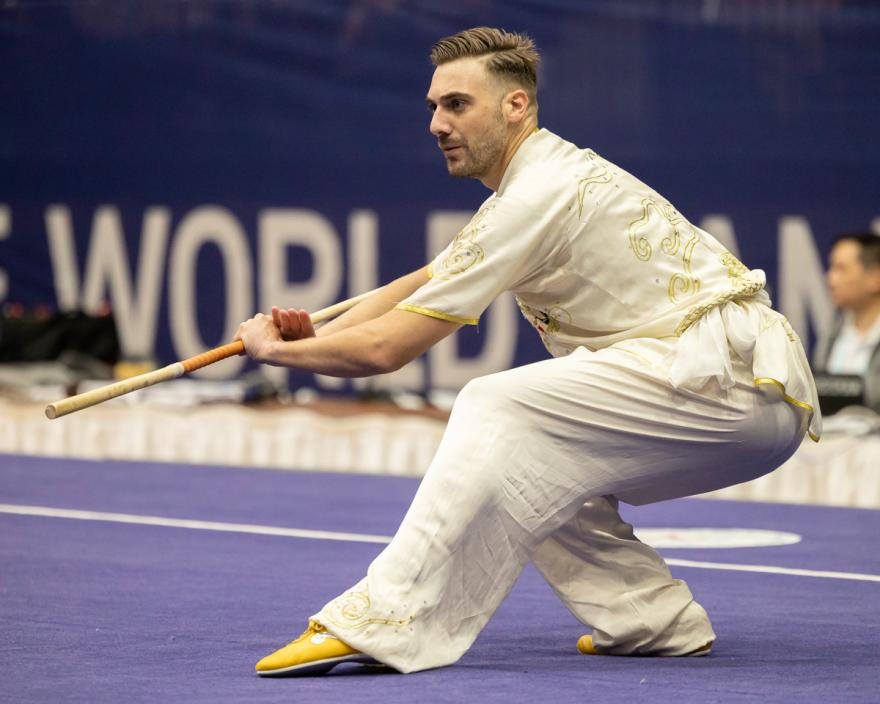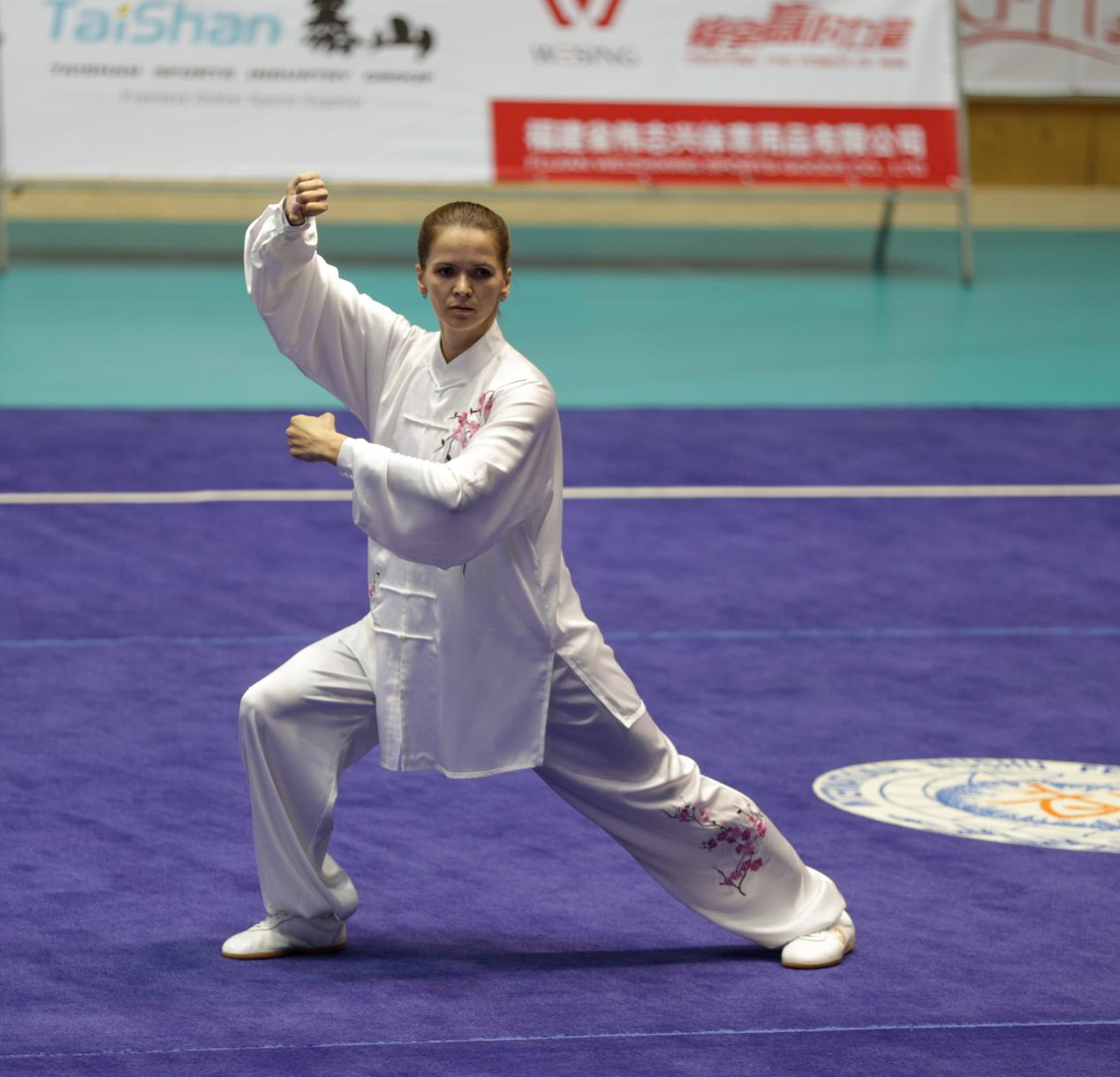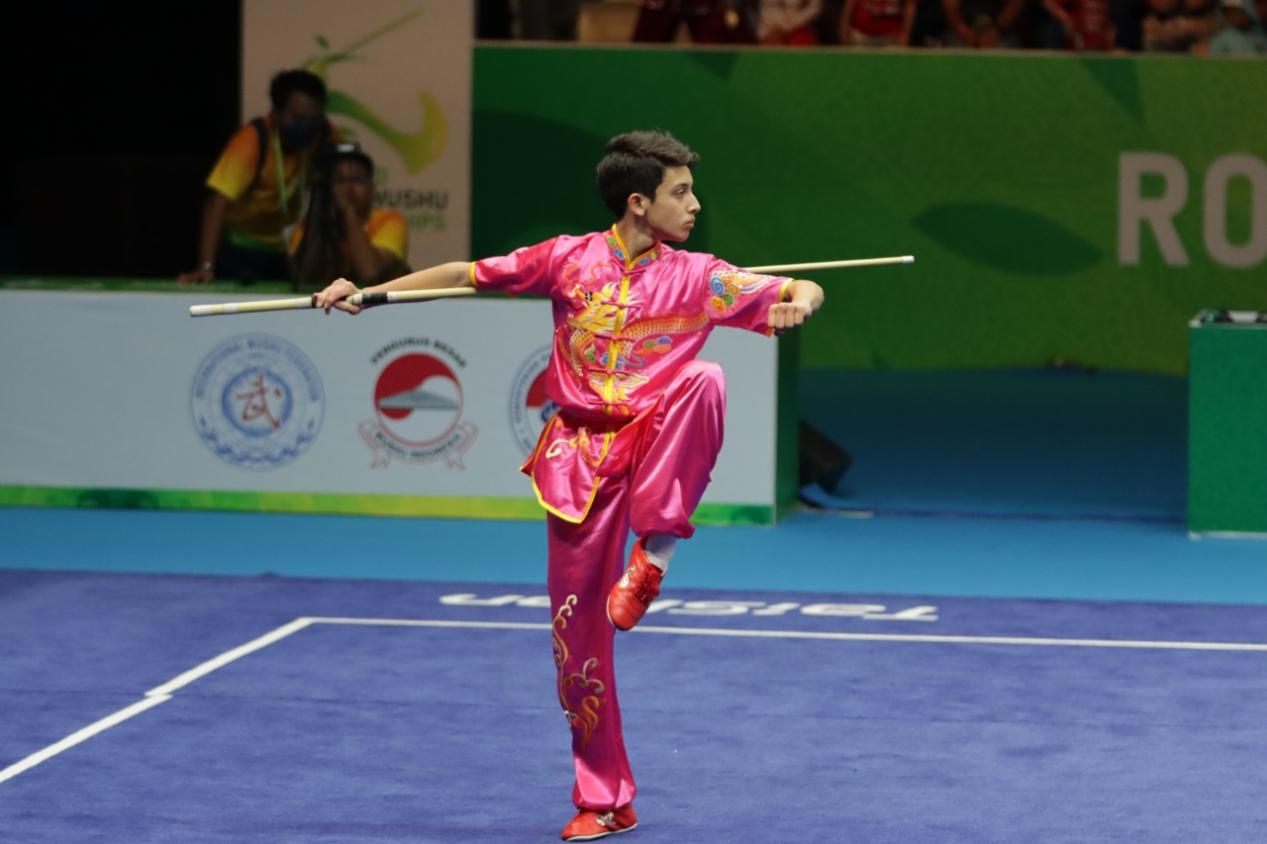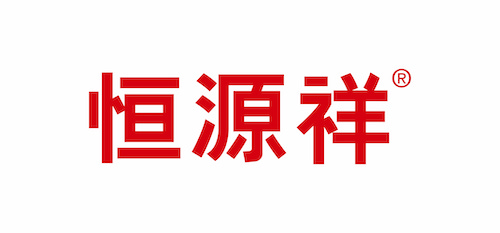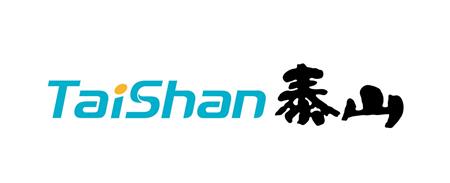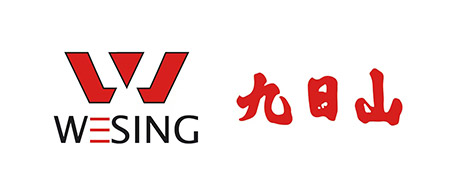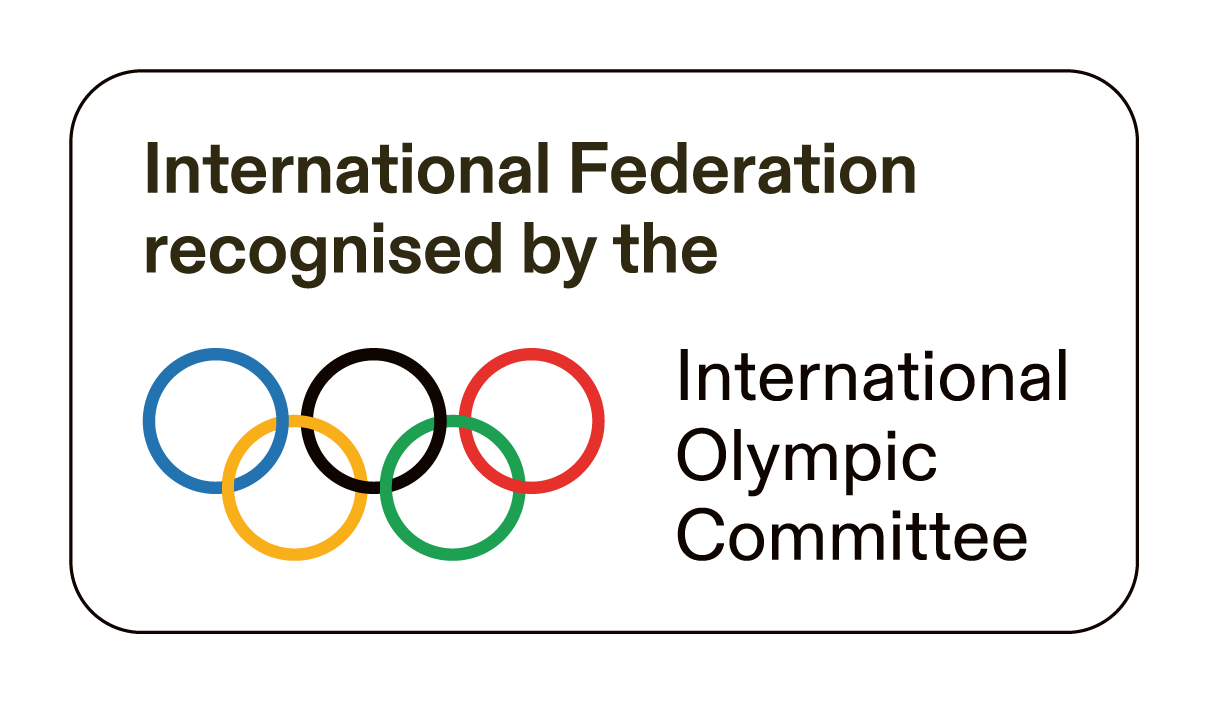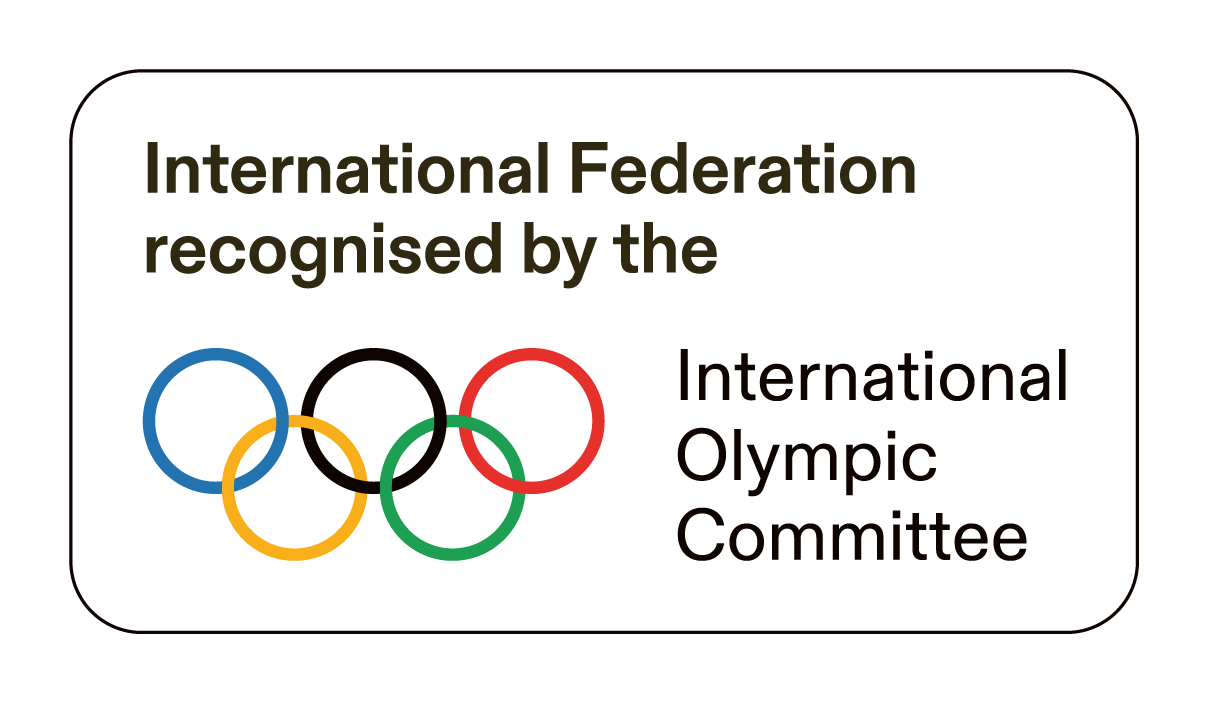Taolu
-
Taolu refers to the set routine (form) practice component of wushu. A taolu routine comprises of a continuously connected set of pre-determined techniques choreographed according to certain principles and philosophies to incorporate stylistic principles of attack and defense. These include hand techniques, leg techniques, jumps, sweeps, stances and footwork, seizing, throwing and wrestling, and balances.
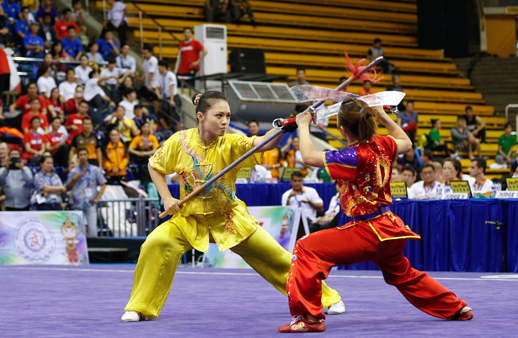
-
Traditionally, taolu routines were compiled to preserve the techniques and tactics of a particular lineage or system, and through regular training would gradually improve a practitioner’s flexibility, stamina, strength, speed, balance, and co-ordination, and would “imprint” a tactical order into practitioners. Taolu routines include individual routines and group routines, as well as duel routines with 2 or more practitioners involved. They have a rich and diverse content, utilizing both bare-handed techniques as well as those performed with weapons.
-
Sport wushu has developed from traditional wushu and is presented to the world in the form of a modern Olympic-level sport with a perfect combination of ancient practices and modern sports principles. Athletes perform routines (barehanded or with weaponry) based on specific rules, highlighting their athletic strengths.
-
Routines are appraised by a panel of judges who evaluate different aspects of a performance, namely quality of movements, overall performance and degree of difficulty, and award a score based on an athlete’s performance. Individual taolu routines include optional routines, compulsory routines, choreographed duel/sparring routines and group routines. Taolu competition takes place in a specialized 8m x 14m arena, which comprises of high density foam covered by a low-static carpet.
At official World Wushu Championships, the main taolu event categories include:
-
Chang Quan (Long Fist)
Changquan (Long Fist): Comprising of styles that originated from and are popular in the northern geographic areas of China (north of the Yangze River), including Cha Quan, Hua Quan, Hong Quan, Shaolin Quan, Fanzi Quan, and Pao Chui, this style is defined by open and long-range strikes, and a wide variety of leg techniques and circular motions. Changquan utilizes open and expanded postures, high speed techniques as well as many aerial and acrobatic techniques. It is a fast, dynamic, and exciting style, incorporating many breathtaking movements.
-
Nanquan (Southern Fist)
Comprising of styles that originated and are popular in the southern geographic areas of China (south of the Yangze River) including Hong (Hung Gar), Li (Lei Gar), Liu (Lau Gar), Mo (Mok Gar), Cai (Choy Gar), Wu Zu Quan, Yong Chun Quan (Wing Chun) and others. Nanquan is characterized by low stances with fewer leg techniques and a focus on short, powerful arm strikes often accompanied by vocal articulation. Focusing on a solid stance and stability, Nanquan has relatively fewer acrobatic techniques, but rather concentrates on generating extremely powerful techniques with intricate and highly-developed hand techniques. It is a fierce and powerful style, practitioners of which express a strong spirit.
-
Taijiquan (Tai Chi Chuan)
The most widely practiced and popular martial art in the world today, taijiquan is characterized by its slow and graceful motions and its combination of both hard and soft techniques. Taijiquan comprises of well-known styles including Chen, Yang, Wu, Sun and Wu (Hao), and is popular due to the health-building and longevity focuses of its practice. Taijiquan’s slow motions are coupled at times with explosive bursts of force, requiring complete harmony of motion and breath, concentration, and coordination of the entire body and mind in a continuous practice.
-
Taijijian (Tai Chi Straight Sword)
Taijijian features the double-edged straight sword employed with Taijiquan principles and movement characteristics. Taijijian is defined by slow motions, coupled at times with explosive bursts of force that, like taijiquan, require total harmony of motion and breath, concentration, and coordination of the entire body and mind in a continuous practice.
-
Daoshu (Broadsword)
As one of the prominent short-blade weapons in Chinese history, the broadsword was widely practiced throughout China. It is a single-edged, curved blade and its practice is characterized by vigorous attack and defensive techniques. The fierce and powerful movements primarily utilize wrapping and entwining techniques with relentless hacking, upper-cutting, slashing, blocking, thrusting, and circling. Its performance requires great strength and coordination between the practitioner’s body and the weapon. Categorized within the “Changquan” (northern) stylistic grouping, daoshu routines are likened to a fierce tiger.
-
Jianshu (Straight Sword)
Comprising of styles that originated and are popular in the southern geographic areas of China (south of the Yangze River) including Hong (Hung Gar), Li (Lei Gar), Liu (Lau Gar), Mo (Mok Gar), Cai (Choy Gar), Wu Zu Quan, Yong Chun Quan (Wing Chun) and others. Nanquan is defined by low stances with fewer leg techniques and a focus on short, powerful arm strikes often accompanied by vocal articulation. Focusing on a solid stance and stability, Nanquan has relatively fewer acrobatic techniques, but rather concentrates on generating extremely powerful techniques with intricate and highly developed hand techniques. It is a fierce and powerful style whose practitioners exude a strong spirit.
-
Gunshu (Cudgel)
Considered the “father” of all weapons, the staff is fast paced and its usage focuses on far-reaching sweeping techniques. Gunshu combines offensive and defensive techniques characterized by quick and heavy movements, with fast and numerous changes. The most commonly used techniques include chopping, butting, sweeping, smashing, and rotating. Gunshu is categorized within the “Changquan” (northern) stylistic grouping and its routines are likened to a heavy rainstorm.
-
Qiangshu (Spear)
The spear is considered the “king” of all weapons, and is the major long-shafted weapon practiced widely throughout China. Its practice is characterized by agile footwork, flexible body work, smooth transitions, and fast and precise short and long-range techniques. While its core technique is thrusting, other techniques also include coiling, circling, and circular blocking as well as slamming movements. The spear requires a high level of physical coordination, relying on force generated from the entire body. This creates a breathtaking and mesmerizing display. Qiangshu is categorized within the “Changquan” (northern) stylistic grouping and its routines are likened to a soaring dragon.
-
Nandao (Southern Broadsword)
Comprising of styles that originated and are popular in the southern geographic areas of China (south of the Yangze River) including Hong (Hung Gar), Li (Lei Gar), Liu (Lau Gar), Mo (Mok Gar), Cai (Choy Gar), Wu Zu Quan, Yong Chun Quan (Wing Chun) and others. Nanquan is defined by low stances with fewer leg techniques and a focus on short, powerful arm strikes often accompanied by vocal articulation. Focusing on a solid stance and stability, Nanquan has relatively fewer acrobatic techniques, but rather concentrates on generating extremely powerful techniques with intricate and highly developed hand techniques. It is a fierce and powerful style whose practitioners exude a strong spirit.
-
Nangun (Southern Staff)
“Nangun” is the collective term given for all the different types of staff styles that originated and are practiced in the southern parts of China such as the “double-headed staff” and “single-headed staff,” as well as techniques from other southern staff styles. With a rich and practical content that includes varied techniques and a fast-paced rhythm, nangun fully embodies and displays the characteristics and spirit of southern staff styles by utilizing double handed techniques, with efficient extension and retraction methods and devastating applications. Nangun’s techniques are clear, accurate, and exact, and are often accompanied by vocal articulation.
-
Duilian (Choreographed Sparring/Duel)
This is a choreographed routine with two or more participants emulating a combat situation featuring bare-handed and/or weapons-based combat. Displaying both attack and defensive applications, duilian requires accuracy, high level mastery, and supreme conditioning. With great speed and momentum featuring leaping, jumping, tumbling, and falling, it is highly energetic and visually entertaining.
-
Baguazhang (Eight Trigrams Palm)
Baguazhang uses circular walking as its foundational training, and its techniques emphasize horizontal and vertical crossing, and changing techniques while walking. Philosophical applications emphasize changing one’s course to follow opportunities, and always adjusting to fit the current situation.
-
Shuangjian (Double Straight Swords)
Utilizing two straight swords employing straight sword techniques, shuangjian demonstrates harmony and coordination between the left and the right hands as well as between the weapons and the body of the performer in a graceful and precise manner.
-
Shuangdao (Double Broadswords)
“The sword holds the courage of the hundred soldiers.” Wielding the Shuangdao (Double Broadswords) requires complete coordination of all four limbs, with steps and rhythms completely in-sync, even more-so than when using the single broadsword; if the lower body’s rhythm is even slightly off, the double broadsword movements become impossible to complete. When performing, footwork must be steady, advance and retreat flexible, and adjustments made when necessary, with steps and blades moving as one; the swords must be unhindered, with movements clear, bold, and powerful.
-
Xingyiquan (Shape & Intent Fist)
Xingyiquan is derived from traditional Chinese cultural ideas of yin and yang, as well as the five elements. Movement principles are derived from concepts of the five elements, and twelve animal forms and characteristics are used as inspiration for practical attack and defense techniques. Xingyiquan features powerful exertions of force.







